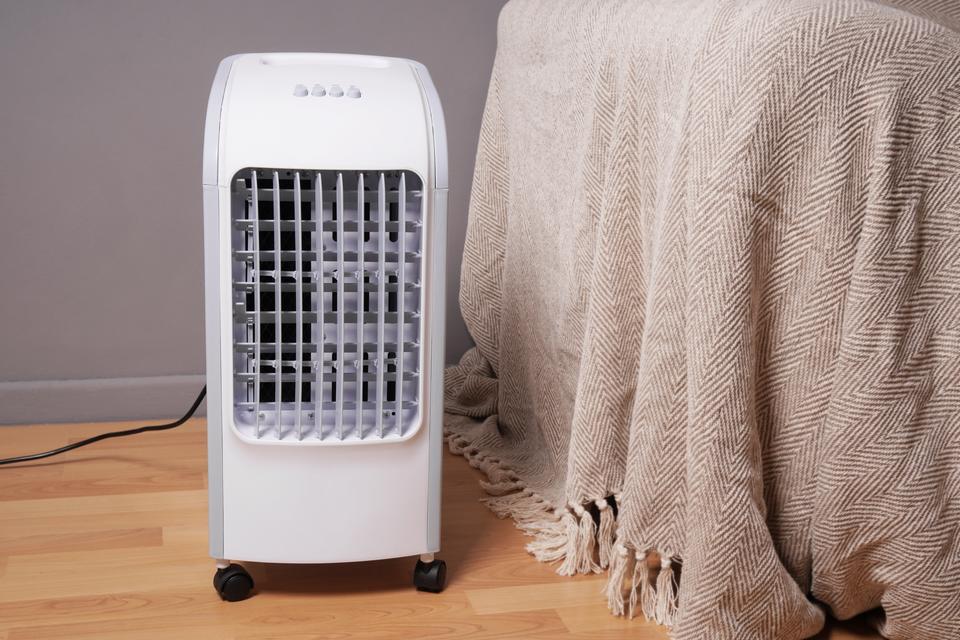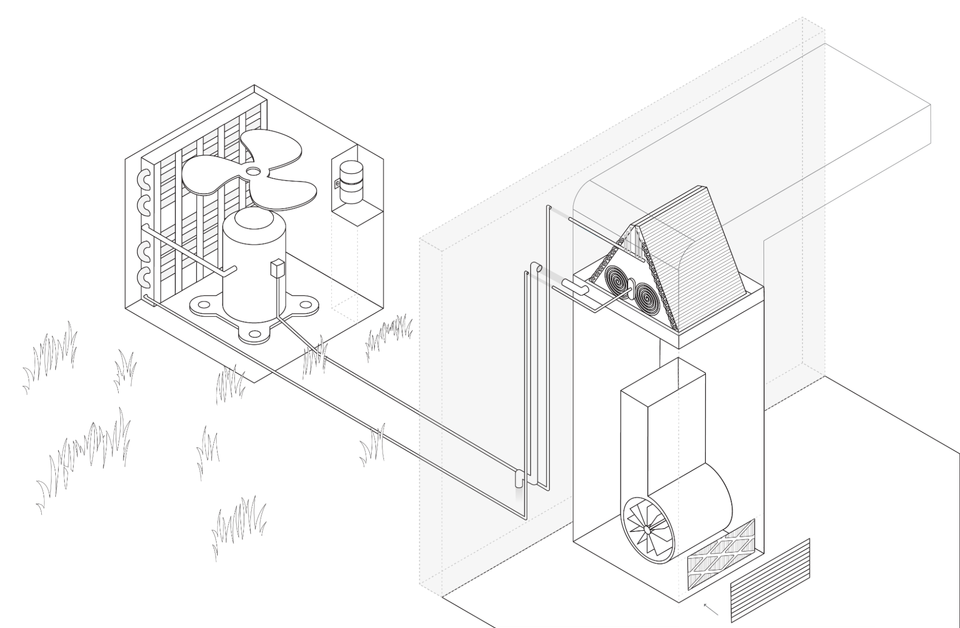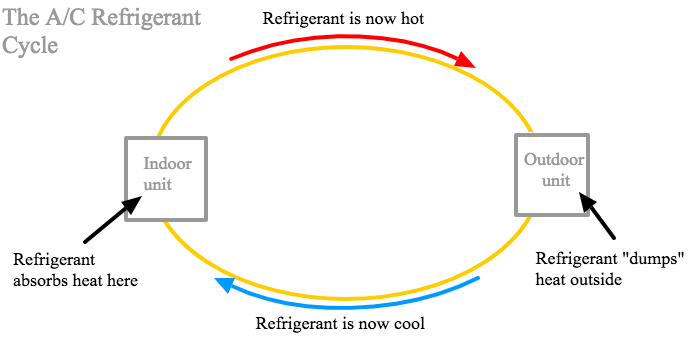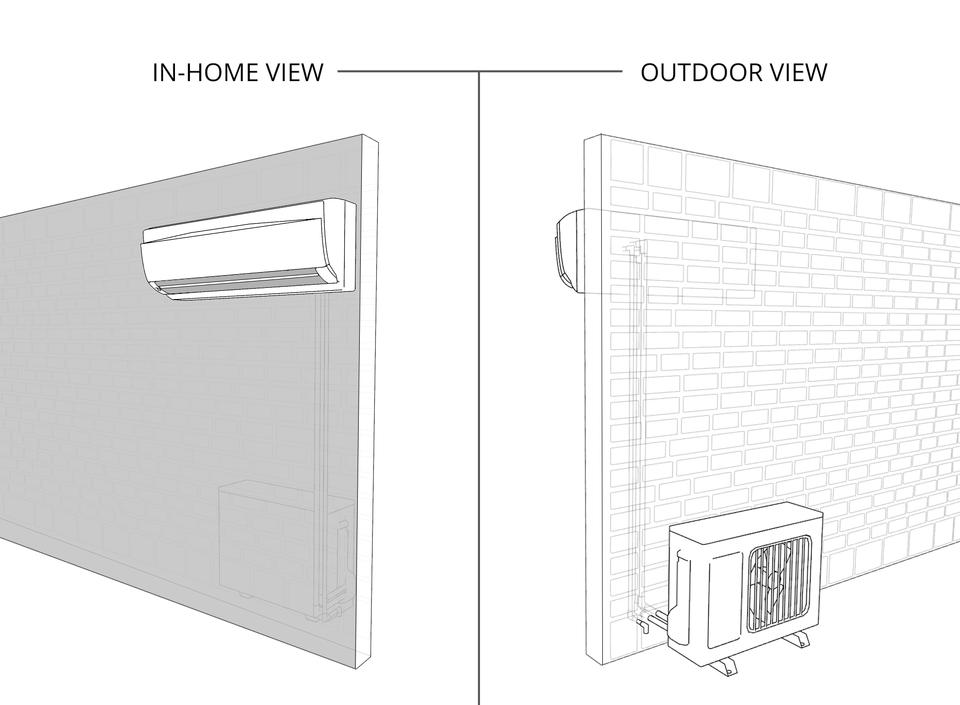3 Types of Cooling Systems: Evaporative Coolers vs. Central ACs vs. Heat Pumps
One thing is certain: If you live in Tucson, a cooling system is essential to survive the sweltering summer. But with so many cooling systems on the market, it can be confusing trying to figure out which option is best for your home.
Fortunately, you’ve come to the right place. At Advantage Air, we have over 30 years of experience installing and repairing cooling systems. We know which cooling systems work best in Tucson, and we can help you find the perfect one for your home.
In this blog, we’ll share the best types of cooling systems:
Let’s start by looking at evaporative coolers.
Want a quote to install a new AC or a new heat pump specific to your Tucson home and needs? Contact Advantage Air Mechanical for an honest recommendation and an upfront quote.
Evaporative Cooler Operation

Evaporative coolers are also called swamp coolers.
How it works
An evaporative cooler (also called a “swamp cooler”) is an air conditioner usually found in dry climates like Arizona. A blower inside the cooler pulls in warm, outdoor air and blows it over water-saturated pads. As the warm air comes into contact with the water, the water evaporates, causing the air to become cool. The blower pushes the cool air into the home and pushes warm air out through open windows.
Whole-home evaporative coolers are typically installed on the roof, although some are installed on windows to cool a room or small area of the home. Down-flow evaporative coolers on the roof push cool air into a central area or carry it to various spaces in the house via ductwork.
Pros & Cons of an Evaporative Cooler
Pros:
- Relatively inexpensive to install
- Low operating cost compared to central AC systems
- Repairs are usually inexpensive compared to other cooling systems
Cons:
- Windows must be partially open to push warm air out
- Cannot provide low cooling temperatures like a central AC
- Requires monthly maintenance
- It does not work as well on rainy days when the outside air is humid
- Only capable of cooling your home (a separate heating system is required)
Which type of home does it work best for?
If your home is relatively small, or you only need to cool one area of your home, you may consider an evaporative cooler—especially if you’re on a tight budget. On the other hand, if you have a multi-story or large home, you’re probably better off with one of the cooling systems below.
Central Air Conditioning Systems Operation

The indoor and outdoor units of a central AC system.
How it works
A central AC system works the opposite of an evaporative cooler. Instead of bringing in outside air to cool, a central AC keeps your house cool by removing heat from the warm, inside air.
A central AC system relies on two major components to remove heat: the indoor and outdoor units.
The indoor unit uses a cold liquid substance called refrigerant to absorb heat from warm air. As the refrigerant absorbs heat, the air turns chilly. The indoor unit pushes this cool air back into your home and sends the refrigerant (which is now a gas because of the absorbed heat) to the outdoor unit.
The outdoor unit disperses the heat absorbed by the refrigerant into the outside air and uses special equipment to cool the refrigerant and return it to liquid form. Once the refrigerant is cool again, the outdoor unit sends the refrigerant back to the indoor unit. The refrigerant continues to cycle between the indoor and outdoor units as long as the thermostat calls for cool air.

The refrigerant cycle in a central AC system
Pros & Cons of a Central AC System
Pros:
- Provides lower temperatures and more even cooling throughout the home
- Works consistently in stormy weather
- Easier to maintain (only requires annual maintenance)
Cons:
- More expensive to install than an evaporative cooler
- Requires ductwork, which can increase the installation cost even more
- It costs more to operate because it uses more electricity than a swamp cooler
- Only capable of cooling your home (a separate heating system is required)
Which type of home does it work best for?
A central air conditioner can work well for homes both big and small. It is the best cooling system for big, multi-story homes because it can provide even cooling to every room in the house (with proper installation).
An alternate option for homes with no ductwork
Another cooling system option for homes without ductwork is a ductless (“mini-split”) AC system. Like a central air conditioner, ductless systems have indoor and outdoor units.

The indoor and outdoor units of a ductless mini-split air conditioner
However, instead of using ductwork to distribute cool air throughout the house, the indoor unit blows air directly into the room or area it's located in.
Ductless systems are perfect for add-on rooms or garages, but they can also work in any room. If you want all of the rooms in your house cooled but you don’t have ductwork, several mini-split systems could be the best option. That way, you don’t have the additional cost of installing ductwork in your home.
Central Heat Pump System Operation
How it works
During the cooling season, a central heat pump works exactly like a central AC. The only difference between a central AC and a heat pump is that a heat pump can also warm your home during the winter.
You see, heat pumps have an exclusive component called a reversing valve. This valve reverses the flow of refrigerant and changes the functions of the indoor and outdoor units. Suffice to say, this reversal allows the outdoor unit to transfer heat into your home.
Heat pumps are especially effective when outdoor temperatures are above 32° F. Since temperatures rarely drop that low here in Tucson, heat pumps are a solid choice for a heating and cooling system.
Pros & Cons of a Central Heat Pump
Pros:
- Capable of cooling and heating your home
- Highly energy-efficient in heating mode, which means lower operational costs in winter
Cons:
- It can be more expensive than a stand-alone AC system
- Shorter lifespan compared to an AC system because it runs year-round
Which type of home does it work best for?
Like a central air conditioner, central heat pumps can work with any size home that has ductwork. If your home does not have ductwork, you may consider a mini-split heat pump system because those do not require ducts to operate.
Learn more about heat pumps by reading these related articles:
Before you choose a cooling system, consult with a professional
A professional can inspect your current HVAC system and give accurate recommendations for a replacement cooling system based on the following factors:
- The layout of your home
- Your family’s cooling needs
- Your budget for upfront installation costs
- Your energy-saving goals (SEER ratings)
Additionally, a professional can help you size your new cooling system to fit your home. An oversized cooling system can lead to expensive repairs and uneven cooling, and an undersized system will struggle to keep your home comfortable and waste energy. It’s better to have a professional help you find the right size system in the beginning to avoid these issues.
Ready for a quote to install a cooling system in your Tucson home?
Call (520) 792-9400 or schedule an appointment online for a free in-home visit with one of our experienced comfort advisors. When working with Advantage Air Mechanical, you can count on fair, upfront prices and honest cooling equipment recommendations. We also offer pay-as-you-go financing options.
Learn more about what to expect when you work with us by visiting our cooling system service pages: